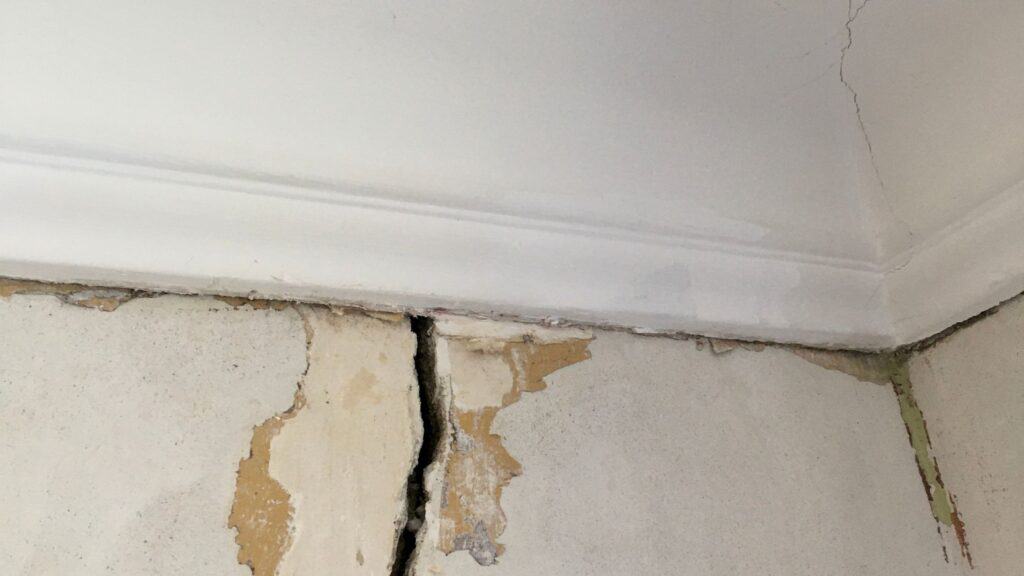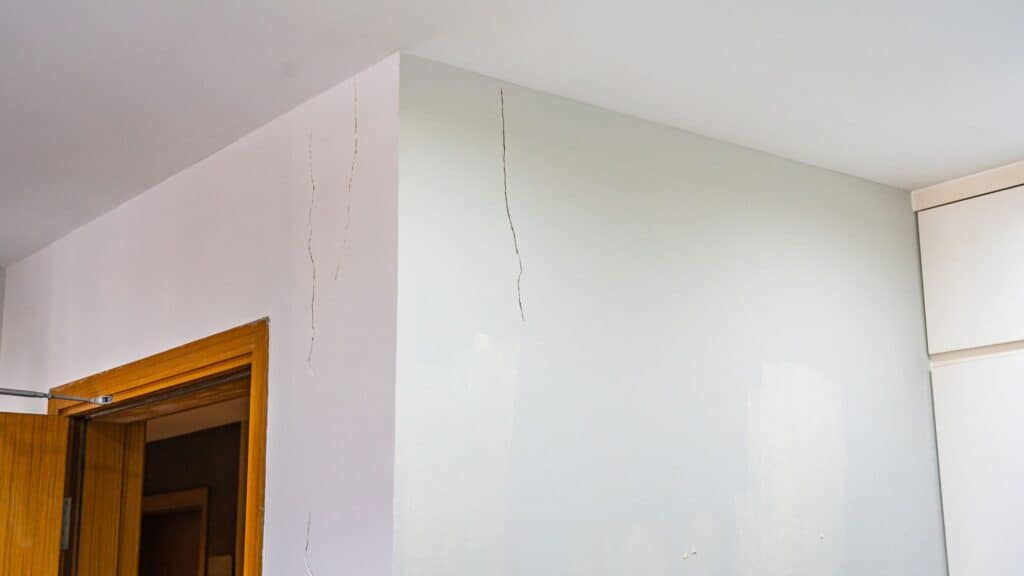In this post, we will go into detail about house wall cracks, listing their possible causes, and understanding what actions can be taken to fix them.
What do cracks in the wall mean for houses?
These are openings that extend through the wall of the property and can reach different directions, dimensions, and depths. Since any property is subject to having a crack in the wall, the causes for the appearance of these cracks are quite variable.
Types Of Wall Cracks – Difference Between A Crack, Fissure, And Crevice
Contrary to what many people think, crack, fissure, and crevice is not the same thing. They are all surface openings but have slightly distinct features and applications.
A crack is a tiny opening or break in the surface of a material that is often created by stress or impact. Cracks can occur in a variety of materials, including rocks, concrete, and wood. They are typically less than a quarter-inch in diameter and vary in length and depth. Cracks in structural materials can compromise the material’s integrity and must be rectified.
A fissure is a long, thin opening or break in the surface of a material that is often caused by stress or impact. Fissures are similar to cracks, although they are typically longer and deeper. They can be found in a variety of materials, including rocks, concrete, and wood. Fissures can compromise the material’s integrity and must be rectified.
A crevice is a tiny aperture or gap formed by erosion or weathering of two surfaces. Crevices are typically less than a quarter-inch wide and vary in length and depth. They are found in a variety of materials, including rocks and soil. Water, grime, and other waste can accumulate in crevices, making them difficult to clean and maintain.
Why Wall Cracks Appear – Cause Of Wall Cracks

The presence of a crack in the wall of the property can be caused by several factors. Therefore, before fixing the crack in the wall, it is essential to find out the reasons that led to its appearance. This way, it will be easier to propose a solution to the problem encountered.
1. Irregular And Poorly Done Plastering
One of the main causes that lead to the appearance of cracks in the wall is the execution of irregular and poorly done plastering work. In this case, the crack in the wall may have arisen due to the use of low-quality products, the hiring of a disqualified professional, or a combination of the two.
The use of materials of poor quality or of suspicious origin often does not support the fluctuations in temperature and the natural movement of the foundation, resulting in the appearance of fissures, crevices, and drywall cracks.
2. Different Materials In Friction
The use of different materials in the structure can cause the appearance of cracks in the wall. After all, each material (wood, iron, bamboo, ceramics, etc.) has a different level of dilation. Therefore, over time, it is natural that this difference causes these materials to separate, causing fissures, crevices, and cracks in the wall.
3. Material Dilation
Temperature variations in the region where the property is being built also directly interfere with the appearance of fissures, cracks, and crevices in walls.
This happens because climatic differences have the ability to promote the expansion or retraction of the structure’s materials. It is for the same reason that architects and engineers calculate these possible movements of materials during the execution of the project.
4. Overload
A crack in the wall can also happen if the weight of the construction of the upper floor of the property is greater than the foundation can support. In this scenario, the appearance of a crack in the wall is almost inevitable. These cracks in particular must be fixed urgently as they completely compromise the structure of the house.
5. Water Infiltrations
Infiltration is when rainwater, soil, or pipes penetrate the walls of the property causing stains, bubbles, mold, and even cracks in the wall. Its presence, in addition to making the environment unpleasant, reduces comfort and can compromise the structure of the property. Therefore, once the infiltration in the property is identified, it needs to be remedied.
6. Vibrations On The Ground
Residential or commercial properties located in areas of high traffic or close to construction sites are more susceptible to cracks in the wall due to the effects of vibrations from these places.
7. Structure Built On Unstable Ground
When a residential or commercial property is built on unstable ground or with a poorly dimensioned structure or foundation, it is natural for cracks in the structure and the wall to appear.
In this case, it is essential to analyze the topography and carry out a study of the terrain by means of a soil survey. This way, it is possible to recognize characteristics such as soil profiles, water table levels, load capacity, or resistance.
Are Wall Cracks Dangerous?

After all, when should you worry about cracks in the wall? Among several factors, we can highlight that a crack in the wall is dangerous when:
- doors and windows are out of alignment and become difficult to close
- the floor is inclined
- cracks in the wall and ceiling
- a crack between the wall and floor
The above cases are signs of structural damage.
How To Repair A Wall Crack?
If you are wondering how to fix wall cracks, here are some tips below:
For fissures and cracks in the wall that are limited to the finishing of the property and are caused by temperature variations, it is recommended to fill the opening with putty, cement, plaster, or industrial sealers. After filling the place, wait for it to dry, then sand it with fine sandpaper and paint the color of the wall.
In the case of a crack in the wall caused by the property’s natural settlement on the ground floor, know that there are special paints that resemble industrial sealers. They can end up covering and even protecting the environment from future openings in the wall.
However, when the crack appears in the verticals or stepped walls (indicating the expansion and accommodation between the bricks and the ground), filling with putty will not be enough. In this case, it is necessary to hire an engineer to assess the conditions of the property and thus define what actions should be taken.
